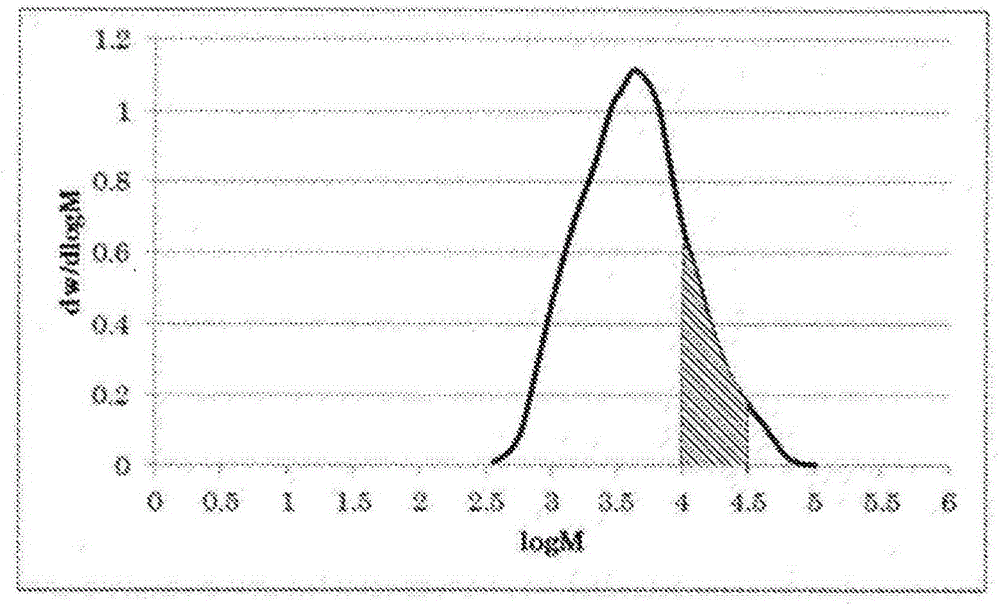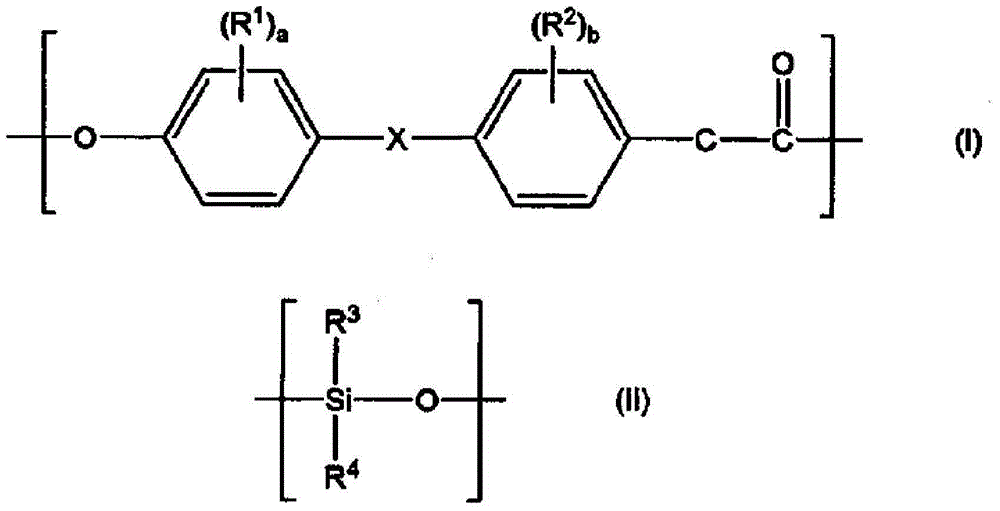Polycarbonate-polyorganosiloxane copolymer and method for producing same
A polyorganosiloxane and polycarbonate technology, which is applied in the field of polycarbonate-polyorganosiloxane copolymers, can solve the problem that transparency is not sufficient, impact resistance is decreased, and it is difficult to be transparent and impact resistance. Impact resistance, etc.
- Summary
- Abstract
- Description
- Claims
- Application Information
AI Technical Summary
Problems solved by technology
Method used
Image
Examples
Embodiment
[0144] Next, the present invention will be described more specifically by way of examples, but the present invention is not limited to these examples. In addition, the characteristic value and evaluation result in each example were calculated|required based on the following points.
[0145] (1) Gel Permeation Chromatography (GPC)
[0146] GPC measurement of polyorganosiloxane was carried out under the following conditions.
[0147] Test equipment: TOSOH HLC 8220
[0148] Measuring conditions: TOSOH TSK-GEL GHXL-L, G4000HXL, G2000HXL
[0149] Solvent: Tetrahydrofuran (THF)
[0150] Column temperature: 40°C
[0151] Flow rate: 1.0ml / min
[0152] Detector: RI
[0153] Injection concentration: 0.2w / v%
[0154] Injection volume: 0.1ml
[0155] Standard polystyrene manufactured by Tosoh Corporation was used for preparation of the calibration curve.
[0156] In addition, the molecular weight distribution measurement of the polyorganosiloxane in polycarbonate-polydimethylsilo...
manufacture example
[0165] 2000 ppm of sodium dithionite was added to the 5.6 mass % sodium hydroxide aqueous solution with respect to bisphenol A (BPA) (dissolved later). BPA was dissolved therein so that the concentration of BPA became 13.5% by mass, and a sodium hydroxide aqueous solution of BPA was prepared. The sodium hydroxide aqueous solution of BPA is continuously passed into the tube type with an inner diameter of 6mm and a tube length of 30m at a flow rate of 40L / hr, dichloromethane at a flow rate of 15L / hr, and carbonyl chloride at a flow rate of 4.0kg / hr. reactor. The tubular reactor has a jacket part, and cooling water is passed through the jacket to keep the temperature of the reaction solution below 40°C. The reaction solution flowing out of the tubular reactor is continuously introduced into a tank reactor with baffles of 40L internal volume of the swept wing, wherein further adding an aqueous sodium hydroxide solution of BPA at a flow rate of 2.8L / hr, at a rate of 0.07 A 25 mas...
Embodiment 1
[0168] Add 15L of polycarbonate oligomer solution, 8.3L of dichloromethane produced as above in the 50L tank reactor equipped with baffle plate, paddle type stirring blade and cooling jacket, meet [average chain length n= 75. The log(M) at which dw / dlog(M) reaches the maximum value is 3.8, and the value obtained by integrating the dw / dlog(M) value in the range of log(M) 4.0 to 4.5 is relative to the value obtained in log(M) ) in the entire range of the dw / dlog (M) value is integrated (hereinafter, sometimes referred to as the ratio of log (M) 4.0 to 4.5 in the embodiments) 24.4% (average chain length n=34, dw / dlog (M) reaches the maximum log (M) is 3.6, the ratio of log (M) 4.0~4.5 is 5.4% allyl phenol terminal modified PDMS and average chain length n=92, dw / dlog (M ) reached the maximum value of log (M) 4.1, log (M) 4.0 ~ 4.5 ratio of 34.5% allyl phenol end-modified PDMS with a mass ratio of 3:7)] allyl 393 g of phenol-terminal-modified polydimethylsiloxane (PDMS) and 5.8 m...
PUM
| Property | Measurement | Unit |
|---|---|---|
| particle diameter | aaaaa | aaaaa |
| electrical conductivity | aaaaa | aaaaa |
| viscosity average molecular weight | aaaaa | aaaaa |
Abstract
Description
Claims
Application Information
 Login to View More
Login to View More - R&D
- Intellectual Property
- Life Sciences
- Materials
- Tech Scout
- Unparalleled Data Quality
- Higher Quality Content
- 60% Fewer Hallucinations
Browse by: Latest US Patents, China's latest patents, Technical Efficacy Thesaurus, Application Domain, Technology Topic, Popular Technical Reports.
© 2025 PatSnap. All rights reserved.Legal|Privacy policy|Modern Slavery Act Transparency Statement|Sitemap|About US| Contact US: help@patsnap.com



